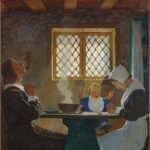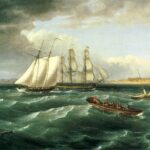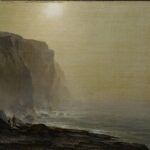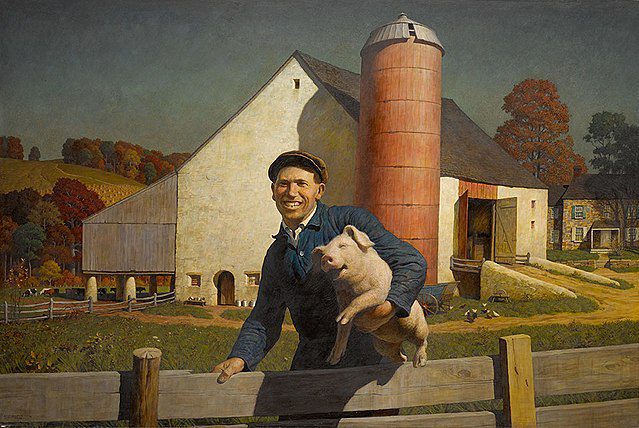
NC Wyeth (1882-1945), born Newell Convers Wyeth, is celebrated as one of America’s foremost illustrators in the early 20th century. His work is characterized by its vivid realism, vibrant color, and dramatic intensity, which captured the imaginations of countless readers. Wyeth’s illustrations for classic novels such as “Treasure Island,” “The Last of the Mohicans,” and “Robin Hood” have become iconic, cementing his legacy as a master of visual storytelling.
Born in Needham, Massachusetts, Wyeth was the eldest of four brothers. From a young age, he displayed a keen interest in art, encouraged by his mother’s creativity and his father’s interest in mechanics and invention. This combination of artistic sensibility and practical skill would define Wyeth’s approach to his work throughout his career.
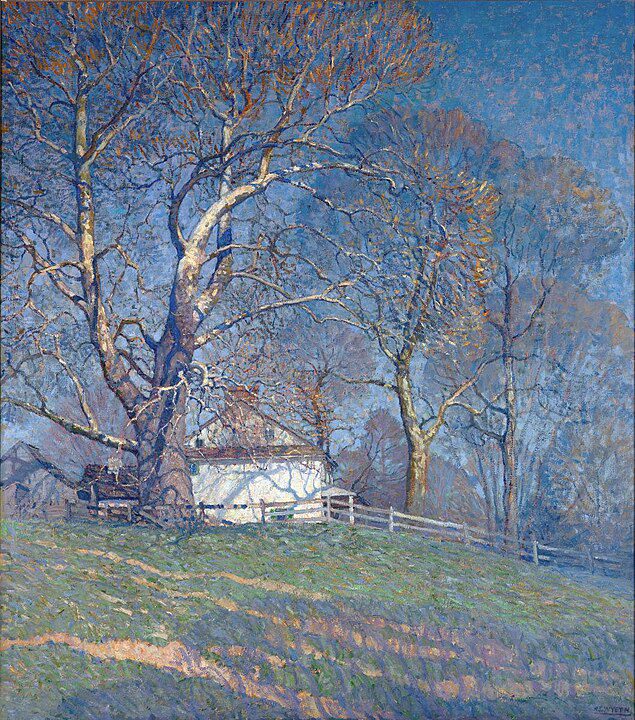
In 1902, at the age of 20, Wyeth moved to Wilmington, Delaware, to study under the artist Howard Pyle, a leading figure in American illustration. Pyle’s emphasis on dramatic and narrative art deeply influenced Wyeth, who quickly absorbed his mentor’s teachings and philosophy. Pyle encouraged his students to “jump into their pictures” to live the scenes they wished to depict, advice that Wyeth took to heart.
Emotion & Skill
Wyeth’s early work gained recognition for its emotional depth and technical prowess. His breakthrough came with his illustrations for “Treasure Island” in 1911, which were celebrated for their dynamic composition and ability to transport readers into the story. This success led to a prolific career as an illustrator, working for major publishers and magazines, and producing over 3,000 paintings.
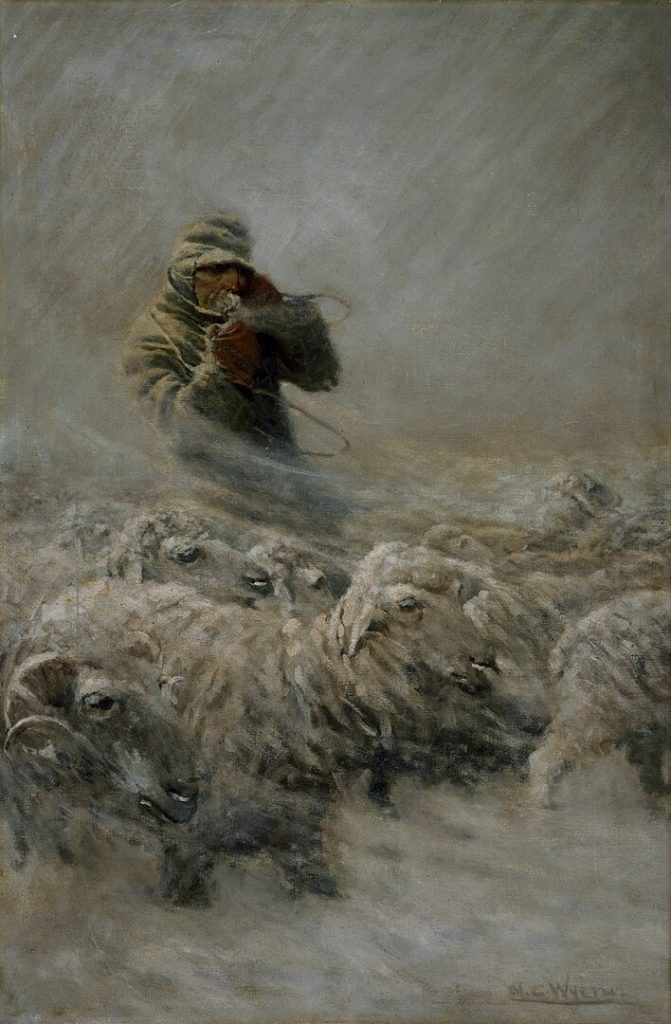
Despite his success in illustration, Wyeth aspired to be recognized as a fine artist. He painted landscapes and portraits that reflected his deep connection to the land and people around him, particularly in Pennsylvania’s Brandywine Valley and Maine, where he spent his summers. These works are distinguished by their lyrical quality and profound sense of place.
Wyeth’s personal life was marked by both joy and tragedy. He married Carolyn Bockius in 1906, and they had five children, including Andrew Wyeth, who would follow in his father’s footsteps to become one of the leading American artists of the 20th century. The Wyeth family’s artistic legacy also includes N.C.’s grandson, Jamie Wyeth, further cementing the family’s place in American art history.
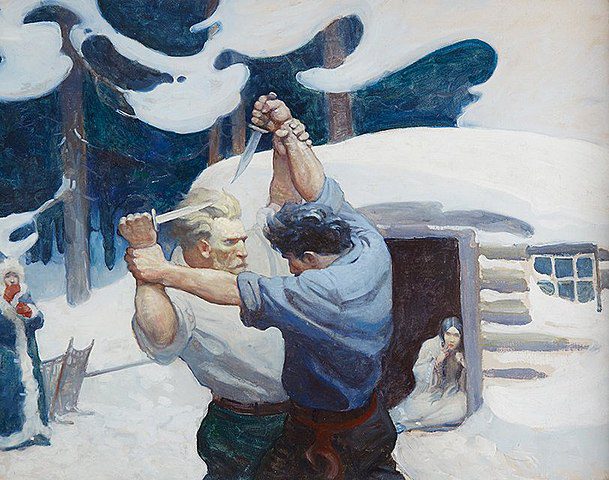
Tragically, Wyeth’s life was cut short in 1945 when he and his grandson, Newell, were killed in a car accident near their home. Despite this sudden end, Wyeth’s influence endures. His work is celebrated for its pioneering role in American illustration, bridging the gap between commercial art and fine art. His vivid, dramatic style and his commitment to storytelling through visual means have left an indelible mark on the world of art.
American spirit
Beyond his illustrations, Wyeth’s paintings offer a window into the American spirit of his time, capturing the rugged landscapes, historical narratives, and characters that shaped the nation’s identity. His dedication to his craft and his ability to convey complex emotions and stories through his art have made him a beloved figure, revered not just for his technical skill but for the depth of his humanity.
Wyeth’s legacy is preserved in the Brandywine River Museum of Art in Chadds Ford, Pennsylvania, which houses a comprehensive collection of works by N.C. Wyeth, his son Andrew, and other family members. This institution serves as a testament to the enduring impact of the Wyeth family on American art and culture.
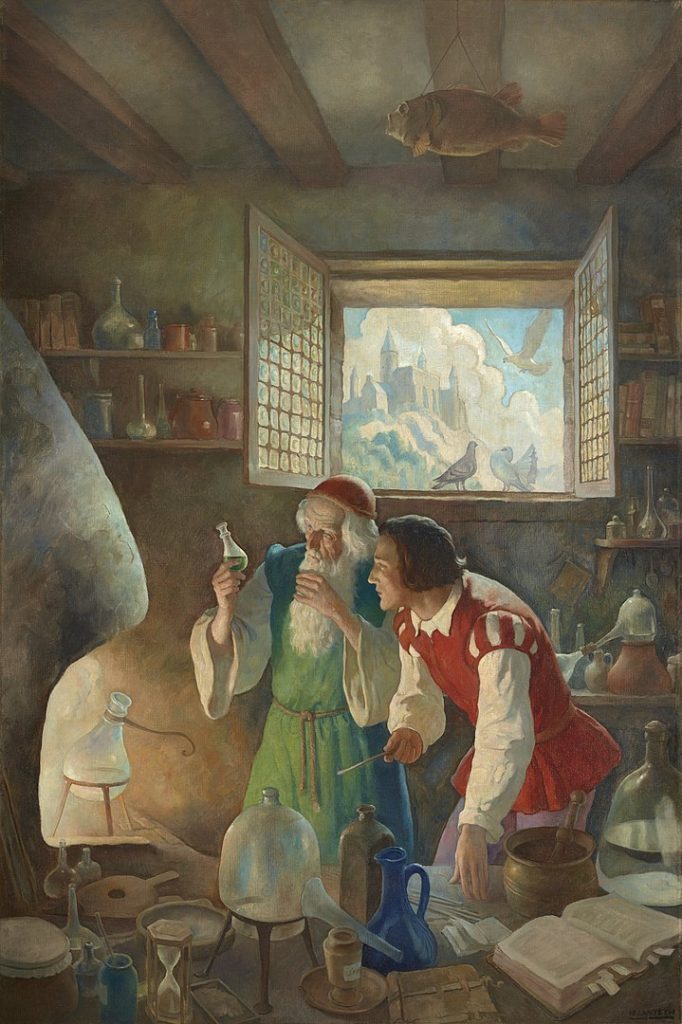
In conclusion, N.C. Wyeth’s contribution to American art cannot be overstated. Through his illustrations and paintings, he brought to life the stories and landscapes that define the American experience. His work continues to inspire and captivate audiences, demonstrating the power of art to transcend time and place. Wyeth’s legacy as a master illustrator and a significant figure in American art history is secure, celebrated for his unique ability to merge the worlds of illustration and fine art in a way that resonates with the universal human experience.


